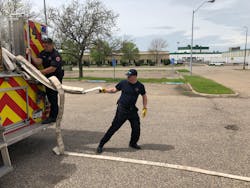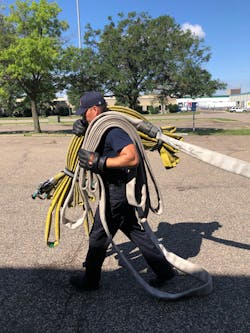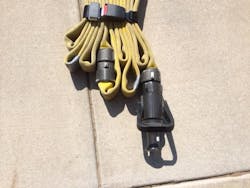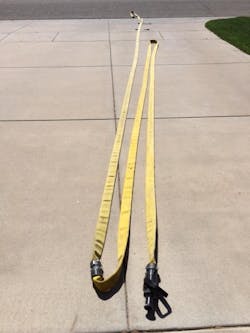Engine Company Operations: The Midwestern Static Load
Through the years, many fire departments have become totally dependent on preconnected hoselines. At one time when staffing was good, hoselines off the rear hosebed were the norm. As staffing levels were cut nationwide, departments tended to move to 1¾-inch preconnected hoselines, and the 2½-inch handline was all but removed from service.
Many departments began to notice deficiencies when fighting fires that strayed from the room and contents single-family dwelling mold. Long stretches were difficult to make, and larger fires were tough to handle without large diameter handlines. Departments began returning to 2½-inch hoses and smoothbore nozzles on attack lines to handle large bodies of fire and fires in large structures such as commercial buildings.
The return of static hoseloads
The term “static” refers to the fact that the hose is not preconnected to a discharge. Static loads allow for the proper hose length to be stretched based on the conditions presented on arrival at a given incident. Fortunately, the trend in the fire service is beginning to return to lower hosebed heights with static loaded 1¾-inch and 2½-inch handlines.
When it comes to hoseloads, there are many different ways to set up hosebeds and preconnected handlines. The goal of any hoseload is to get the nozzle and working line to the front door. The amount of working line will vary depending on the district served, but in general the first 50–75 feet is considered to be the working line. Most departments use 50-foot sections of hose for both 2½-inch and 1¾-inch hoselines, which makes it easy to visually check that the proper working line is at the entry point. The term “brass to the door” denotes that the nozzle and first coupling are located six to eight feet from the entry door with the hose placed in a “U” or a “W” shape if space is limited. This is our gold standard when the line is stretched.
The Midwest Connection
Departments should develop standardized hoseloads that can easily be deployed by the available staffing levels. Often this is a three-person engine company. By standardizing loads each time the hoseline is deployed, the other lines on the apparatus will be mutually consistent—2½-inch with 1¾-inch bundles and 2½-inch with 2½-inch bundles. This helps personnel develop the needed muscle memory for smooth deployments.
When the Wichita, KS, Fire Department began moving back to stretching from the rear hosebed, they set out to develop a hoseload that was quick to deploy with their staffing model. Their goal was brass to the door, hoseline charged and bled, crew masked up and ready to fight fire within one minute of the airbrake being set. Through trial and error, along with taking various elements of loads they had utilized and observed, they came up with their current bundles.
A static rear stretch is fairly straightforward until obstacles are added to the route of travel. A systematic hoseload has to be in place to allow members to easily lay hose around obstacles instead of being forced to drag hose around them. The Saint Paul, MN, Fire Department has utilized a skid load for many years consisting of 600 feet of static 2½-inch hose with a 100-foot 1¾-inch bundle. The last 200 feet of 2½-inch prior to the 1¾-inch bundle is loaded in 50-foot stacks to allow easy deployment for long setbacks, large structures and apartment buildings lacking standpipes.
When the Wichita bundle is added to the Saint Paul stacks it produces an extremely versatile static hoseload. The combination of these two hoseloads came about one year at the annual Wichita H.O.T. Conference. We were discussing our current hoseloads and some of the challenges we faced in our districts. During some downtime, a Wichita Engine Company was loaded with Saint Paul stacks and the crew drilled on long stretches. This collaborative event resulted in the basis for this article.
The Saint Paul Stacks
As stated, the Saint Paul static load consists of 600 feet of 2½-inch hose with a tapered reducer and a 100-foot 1¾-inch bundle. The hosebeds of the current fleet vary in size depending on the era of the engine. The first 400 feet of 2½-inch hose is loaded flat and flush with the end of the bed. The last 200 feet of 2½-inch hose is loaded in 50-foot stacks. Each stack starts with a loop that protrudes from the end of the bed to provide a visual indication of what stack to pull. The remainder of the 50-foot section is stacked directly on top of the loop. Depending on the length of the hosebed, stacks can be shortened to roughly six feet to permit easier shouldering of the stack. The next 50-foot stack begins with a slightly larger loop and is loaded the same way. Each successive stack begins with a slightly larger loop, and the largest loop is the first stack to come out of the hosebed. Depending on the width of the hosebed, the stacks can be placed next to each other or on top of each other. At this point the bundle can be connected and placed on the top with the nozzle, marked midpoints and couplings at the very end.The use of stacks with loops allows for a hoseload that can easily be dragged or shouldered. When obstacles are not present between the apparatus and the target objective the MPO, officer, or layout firefighter can grab the largest loop to clear 100 feet of travel line. Often 100 feet of travel line is sufficient for residential setbacks.
If obstacles or length complicates the stretch, members can load stacks on their shoulders or forearms. This stretch begins with the officer determining how many lengths of hose are needed to make it to the entry point. Members can then load the proper number of stacks onto their shoulders or forearms. This process is started by shouldering the bundle and slowly pulling the largest loop of hose, which in turn will pull the stack of hose on top of it. When approximately two feet of the stack has cleared the hosebed, clamp the stack between your thumb and fingers, and turn away from the hosebed as you flip the stack onto your shoulder. The flip of the hose allows the stack to deploy off the top as you make your way to the objective. Continue loading hose in this fashion until the necessary amount has been shouldered. The last stack off the hosebed is the first to deploy during travel. Make sure you keep a firm clamp on the stack and allow only one flake to come off at a time. This ensures a taut travel line to the entry point.
The Wichita Bundles
The bundle and hosebed sections are loaded the same for 1¾-inch and 2½-inch lines. Bundles can be 80 or 100 feet in length. Two 50-foot hose sections are marked at the midpoint. Duct tape in a contrasting color to the hose works well for marking because it is inexpensive, stays in place, does not damage the hose and holds up well.
Use a 6-foot hook as a measuring reference. With the nozzle coupling even with the end of the hook, fold the hose at the other end of the hook. The third fold by the nozzle should be very near the taped midpoint. If it is not, adjust it so the midpoint mark sits at the very end. The tail at the other end may be slightly shorter or longer than the others. Continue to the first coupling, and stagger the lengths slightly so the hose packs tightly. The fourth fold should be very close to the first coupling. If it is not, move the coupling to the very end, and adjust the length at the other end to accomplish this. The sixth fold of the bundle should once again be at the taped midway point. Move it to the end making up the difference on the other side of the bundle. Make one final fold giving you approximately an 80-foot bundle and a short tail to hook to the hosebed section. If making a full 100-foot bundle, continue to the eighth fold, which should be your second coupling. Move it to the end, connect it to the hosebed section, and tightly strap the assembled bundle together. Strap options can include anything from seat belt extenders, to homemade straps with seat belts from the junkyard, to Velcro straps. It comes down to budget and personal preference. Place the bundle on the top of the hosebed as described above.
Deployment
It works best if the travel line is pulled at the same time as the bundle. This can be accomplished in several ways. The nozzle person can grab the single loop after they throw the bundle on their shoulder and release the loop about halfway to the entry point. The officer, layout firefighter or MPO can also grab the loop and pull it off the hosebed to clear enough line for the stretch. Finally, the stacks can be loaded onto the forearm or shoulder for deployment. Once the appropriate amount of hose has been pulled, the line can be broken and connected to the discharge by the MPO.
A major advantage of this load is that it can be backstretched to a hydrant so the MPO can secure a water supply. Here the nozzle person removes the bundle from the hosebed, and the officer or layout firefighter pulls the needed travel line stacks. The travel line is stepped on to secure it, and the MPO continues down the street to the hydrant when directed. The MPO then must break the line, send tank water when called for, and make the hydrant connection. This ensures a positive water supply and leaves the front of the building open for the truck company.
Confined area variation
The standard deployment will typically work even in tight places. A more compact working line arrangement may sometimes be required in confined stairwells or small apartment hallways. If dropping the bundle at the door and stretching away, grab the taped midway points and walk them back like normal, then walk them halfway back up and throw them over the coupling side of the load. Conversely, if stretching forward, drop the bundle, break the straps, grab the nozzle and first taped midpoint and, if needed, the second taped midpoint, and walk up to the door. It is often beneficial to spread the bundle and shake the line as you advance to avoid dragging excess hose.
Takeaway
Departments must have tactics available for long stretches. No matter the hoseload that is selected, members must be proficient in its deployment. Take time to train doing actual stretches within the confines of complex building elements and obstacles that may be encountered in your district.
About the Author

Keith Niemann
Keith Niemann is a 20-plus-year veteran of the fire service with Wichita, KS, Fire Department's training division, assigned to Firehouse 22. As a field training officer, Niemann responds to all fires and major alarms on his shift as well as serves as a lead instructor, teaching hands-on skills to members of all ranks. He also is the president of the FOOLS of OZ, teaching engine company operations throughout the country.
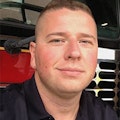
Jonathan Hall
Jonathan Hall, who is a Firehouse contributing editor, has more than 24 years of fire service experience. He currently is a captain with the St. Paul, MN, Fire Department assigned to Engine Company 14. Hall also serves as a lead instructor in the department's Training Division; he teaches hands-on skills to members of all ranks. Hall is the co-owner of Make The Move Training LLC and teaches engine company operations throughout the country.

